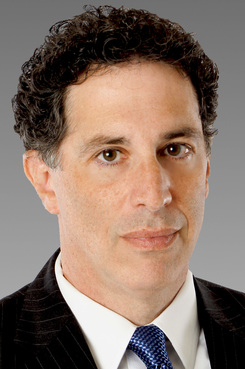Several Steps to Improve Your Patent Strategy in 2018
If the survival and growth of your business depends on the development of new technology, the beginning of the new year is a good time to think about your intellectual property (IP) protection and how it can be improved.
January 23, 2018 at 12:59 PM
6 minute read

If the survival and growth of your business depends on the development of new technology, the beginning of the new year is a good time to think about your intellectual property (IP) protection and how it can be improved. Patents, in particular, are the lifeblood of a technology company's future. Even if your company has filed for patent protection in the past, it would be wise to evaluate how your company's patent protection is managed, and whether changes are needed. Here are several steps you can take to improve your patent strategies in 2018.
Ownership
Being at the forefront of new technology has the potential to be highly profitable, but if your company does not own the rights to the technology it is developing, monetizing that technology can be difficult. That is why it is so important to make sure your company owns the rights you think it owns. First and foremost, your company's employees should have contractually agreed to assign to the company the rights to any technology created by them as a result of their employment. Each and every time a new employee is hired, the employee should sign a written agreement assigning all intellectual property rights to the employer. Many companies also ask employees to list technology developed prior to and outside of their current employment to ensure that there is no question as to exactly which rights the company is entitled.
It is important, also, to ensure consultants and outside vendors agree that any technology developed during the performance of a contract with your company belongs to your company. This guideline applies both to individual consultants and to vendor companies that are assisting in product development. Before engaging any outside party to assist with the development of technology, always ensure that a written contract is in place that requires the assignment to your company of innovations developed during the performance of the contract.
Comparison With Competitor Products and Services
As a technology innovator, your company is trying to dominate a certain market space, as do your competitors. It is thus vital to compare the products and services you are planning to provide with the products and services being offered by your competitors. Your company's engineers should have a good understanding of the products and services your competitors currently have available on the marketplace. Your sales staff, as well, should be knowledgeable of both the features that your customers like (whether offered by you or your competitors) as well as the complaints about the limitations of currently available products and services. If your company is trying to address a marketplace “wish list,” then your employees should know where and why current problems exist. It would also be helpful to understand how competitors are trying to solve current problems, to the extent that information is available.
Technical Feature Isolation
Once you understand the technical problems your company is focused on, the next step is to take a very close look at the details of the proposed solutions. If your company is developing a competing product that can be sold at a price lower than your competitors, how is technology being used to lower the price? What technical innovation is being relied on to produce a product or service that is cheaper? If a product that operates faster than the competitor's product is being developed, how is technology being used to achieve that faster result? What aspect of a design gives your company's product faster speed over the competition? If your company's product provides a more personalized experience, how has technology been used to obtain that personalization? In what ways has your company's product been designed to provide a more unique experience to each user?
It is thus valuable to look at the advantage that your product or service obtains over your competitors and then to understand, from a technical perspective, how that advantage is achieved. Your company's engineers and development staff incorporate specific aspects into their design to achieve better results than those obtained by your competitors. You need not only to understand how these features have been implemented from a broad, generic perspective, but to be aware of how the basic concepts that enable that commercial advantage are achieved.
Formulate a Protection Plan
After identifying where your company technologically excels, and the specific design features that achieve that excellence, it is necessary to understand the other options that are available so that your innovations may warrant patent protection. You should think of patent protection as an investment in your company's future. Like any investment, it is important that patent protection be performed thoughtfully, and not merely speculatively. Patent protection can be very expensive. Therefore, it is imperative to rely on cost savings mechanisms, when appropriate, so that patent protection is obtained in a fiscally prudent manner. Some patent applicants rely on provisional patent applications that can be filed at a lower expense than non-provisional (leading to patent grant) patent applications and with much fewer formality requirements. Using the patent strategies outlined above, technical innovations can be captured and filed as provisional applications with the US Patent and Trademark Office (USPTO) in order to secure a “filing date.” Once a filing date is obtained, the patent applicant has 12 months to file a formal nonprovisional patent application, at which time higher expenses are incurred. Another tool for reducing costs is to file a patent cooperation Treaty (PCT) patent application. PCT applications provide up to 31 months of delay before a patent applicant must decide if foreign patent protection is desired. PCT applications are not cheap, but the combined cost of filing patent applications in multiple foreign countries can be significant, and a PCT application can defer costs. Another important consideration when it comes to foreign patent protection is to know the foreign countries where your competitors are doing business. With this knowledge, you may be able to identify where your company should file for patent protection in order to try to exclude your competitors from using your technology in that market.
With the strategies described above, 2018 can be the year in which your company takes the right steps to create valuable patent protection.
Lawrence E. Ashery is a partner in the Philadelphia office of Caesar Rivise. He focuses his practice on all aspects of intellectual property law. He can be reached at [email protected].
This content has been archived. It is available through our partners, LexisNexis® and Bloomberg Law.
To view this content, please continue to their sites.
Not a Lexis Subscriber?
Subscribe Now
Not a Bloomberg Law Subscriber?
Subscribe Now
NOT FOR REPRINT
© 2025 ALM Global, LLC, All Rights Reserved. Request academic re-use from www.copyright.com. All other uses, submit a request to [email protected]. For more information visit Asset & Logo Licensing.
You Might Like
View All
Products Liability: The Absence of Other Similar Claims—a Defense or a Misleading Effort to Sway a Jury?


Essential Labor Shifts: Navigating Noncompetes, Workplace Politics and the AI Revolution

Trending Stories
- 1'It's Not Going to Be Pretty': PayPal, Capital One Face Novel Class Actions Over 'Poaching' Commissions Owed Influencers
- 211th Circuit Rejects Trump's Emergency Request as DOJ Prepares to Release Special Counsel's Final Report
- 3Supreme Court Takes Up Challenge to ACA Task Force
- 4'Tragedy of Unspeakable Proportions:' Could Edison, DWP, Face Lawsuits Over LA Wildfires?
- 5Meta Pulls Plug on DEI Programs
Who Got The Work
Michael G. Bongiorno, Andrew Scott Dulberg and Elizabeth E. Driscoll from Wilmer Cutler Pickering Hale and Dorr have stepped in to represent Symbotic Inc., an A.I.-enabled technology platform that focuses on increasing supply chain efficiency, and other defendants in a pending shareholder derivative lawsuit. The case, filed Oct. 2 in Massachusetts District Court by the Brown Law Firm on behalf of Stephen Austen, accuses certain officers and directors of misleading investors in regard to Symbotic's potential for margin growth by failing to disclose that the company was not equipped to timely deploy its systems or manage expenses through project delays. The case, assigned to U.S. District Judge Nathaniel M. Gorton, is 1:24-cv-12522, Austen v. Cohen et al.
Who Got The Work
Edmund Polubinski and Marie Killmond of Davis Polk & Wardwell have entered appearances for data platform software development company MongoDB and other defendants in a pending shareholder derivative lawsuit. The action, filed Oct. 7 in New York Southern District Court by the Brown Law Firm, accuses the company's directors and/or officers of falsely expressing confidence in the company’s restructuring of its sales incentive plan and downplaying the severity of decreases in its upfront commitments. The case is 1:24-cv-07594, Roy v. Ittycheria et al.
Who Got The Work
Amy O. Bruchs and Kurt F. Ellison of Michael Best & Friedrich have entered appearances for Epic Systems Corp. in a pending employment discrimination lawsuit. The suit was filed Sept. 7 in Wisconsin Western District Court by Levine Eisberner LLC and Siri & Glimstad on behalf of a project manager who claims that he was wrongfully terminated after applying for a religious exemption to the defendant's COVID-19 vaccine mandate. The case, assigned to U.S. Magistrate Judge Anita Marie Boor, is 3:24-cv-00630, Secker, Nathan v. Epic Systems Corporation.
Who Got The Work
David X. Sullivan, Thomas J. Finn and Gregory A. Hall from McCarter & English have entered appearances for Sunrun Installation Services in a pending civil rights lawsuit. The complaint was filed Sept. 4 in Connecticut District Court by attorney Robert M. Berke on behalf of former employee George Edward Steins, who was arrested and charged with employing an unregistered home improvement salesperson. The complaint alleges that had Sunrun informed the Connecticut Department of Consumer Protection that the plaintiff's employment had ended in 2017 and that he no longer held Sunrun's home improvement contractor license, he would not have been hit with charges, which were dismissed in May 2024. The case, assigned to U.S. District Judge Jeffrey A. Meyer, is 3:24-cv-01423, Steins v. Sunrun, Inc. et al.
Who Got The Work
Greenberg Traurig shareholder Joshua L. Raskin has entered an appearance for boohoo.com UK Ltd. in a pending patent infringement lawsuit. The suit, filed Sept. 3 in Texas Eastern District Court by Rozier Hardt McDonough on behalf of Alto Dynamics, asserts five patents related to an online shopping platform. The case, assigned to U.S. District Judge Rodney Gilstrap, is 2:24-cv-00719, Alto Dynamics, LLC v. boohoo.com UK Limited.
Featured Firms
Law Offices of Gary Martin Hays & Associates, P.C.
(470) 294-1674
Law Offices of Mark E. Salomone
(857) 444-6468
Smith & Hassler
(713) 739-1250





